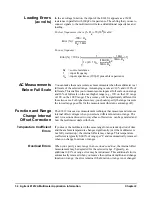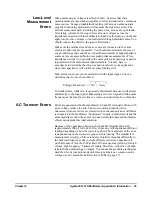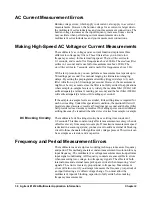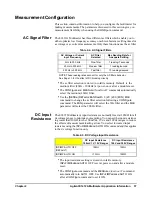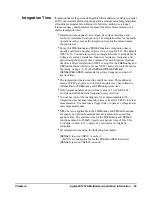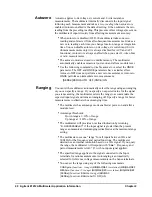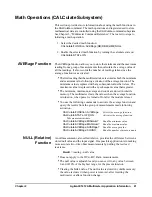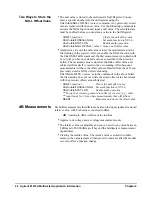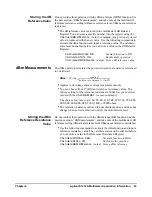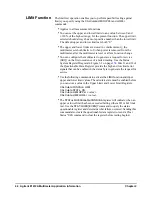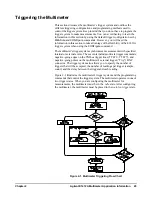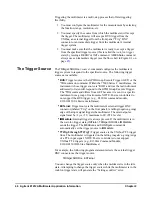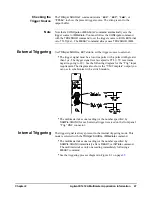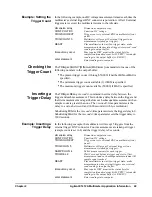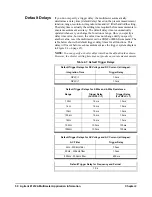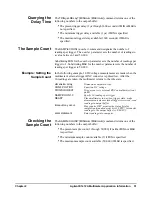
Agilent E1412A Multimeter Application Information
47
Checking the
Trigger Source
The
TRIGger:SOURce?
command returns
“BUS”
,
“EXT”
,
“IMM”
, or
“TTLT
n
”
to show the present trigger source. The string is sent to the
output buffer.
Note
Note that a
CONFigure
or
MEASure?
command automatically sets the
trigger source to
IMMediate
. You must follow the
CONFigure
command
with the
TRIG:SOUR
command to set the trigger source to
BUS
,
EXTernal
or to
TTLTrg<
n
>
. The
MEAS?
command always uses
TRIG:SOUR IMM
.
External Triggering
Use
TRIGger:SOURce EXTernal
to set the trigger source to external.
•
The trigger signal must be a low-true pulse with a pulse width greater
than 1
s. The trigger signal level accepted is TTL (+5V maximum
negative-going to 0V). See the following diagram for the “Trig” input
requirement. The diagram also shows the “VM Complete” output you
can use to synchronize with a switch module.
•
The multimeter takes one reading (or the number specified by
SAMPle:COUNt
) for each external trigger received on the front panel
“Trig” BNC connector.
Internal Triggering
The trigger signal is always present in the internal triggering mode. This
mode is selected with the
TRIGger:SOURce IMMediate
command.
•
The multimeter takes one reading (or the number specified by
SAMPle:COUNt
) immediately after a
READ?
or
INITiate
command.
The multimeter takes only one reading immediately following a
MEAS?
command.
•
See the triggering process diagram in Figure 2-1 on page
.
Summary of Contents for Agilent E1412A
Page 2: ......
Page 10: ...8 Contents Notes...
Page 14: ...12 Notes...
Page 15: ...13 Notes...
Page 16: ...14 Notes...
Page 26: ...24 Agilent E1412A Multimeter Module Setup Chapter 1 Notes...
Page 194: ...192 Agilent E1412A Multimeter Error Messages Appendix B Notes...
Page 201: ...Index 199 Index Agilent E1412A User s Manual and SCPI Programming Guide...


